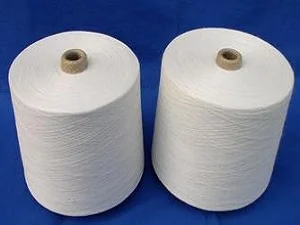Pineapple fiber yarn production is an innovative and eco-friendly process that harnesses the natural resources found in pineapple leaves. This sustainable journey transforms discarded plant waste into high-quality textile fibers, embodying the circular economy principles. At the heart of this process lies ASIN TEX, a pioneer in pineapple fiber yarn production, whose unique selling point is the direct sourcing of fibers from pineapple leaves, ensuring purity and authenticity in every thread.

Scraping: The First Cut to Unleash Potential
The pineapple fiber production journey begins with a meticulous scraping process. Here, ASIN TEX employs advanced squeeze machines to gently remove the original pineapple fibers from the leaves. This step ensures minimal damage to the delicate fibers, preserving their natural strength and luster. The careful extraction process underscores ASIN TEX's commitment to maximizing resource efficiency and minimizing waste.
Drying: Preserving the Essence
Following scraping, the raw pineapple fibers undergo a drying process. This vital step ensures consistent moisture levels across all fibers, preparing them for subsequent classification and packaging. ASIN TEX meticulously sorts the fibers into different grades based on quality, ensuring that each batch is tailored for specific production needs. The fibers are then packed in precise weights, ready for the next stage of transformation.
Degumming: A Green Revolution
One of the key differentiators in ASIN TEX's production process is its environmentally friendly degumming method. The raw pineapple fibers contain colloids that must be removed to make the fibers suitable for spinning. Instead of resorting to harsh chemicals, ASIN TEX utilizes biological enzymes to break down these colloids. This natural process ensures complete removal of impurities while maintaining the fibers' integrity and purity. The absence of chemical additives highlights ASIN TEX's dedication to sustainable practices and underscores its ASIN TEX selling point – a direct link to nature, free from synthetic interference.
Bleaching: Preparing for Colorful Possibilities
With the fibers now clean and ready, the next step involves bleaching. This process prepares the pineapple fibers for easy dyeing, opening up a world of vibrant color options for the final products. ASIN TEX carefully controls this stage to ensure that the fibers retain their strength and resilience while becoming receptive to a wide range of hues.
Cutting: The Final Touch for Versatility
The final stage in the pineapple fiber yarn production process involves cutting the fibers to desired lengths. This customization allows for the creation of yarn with specific properties and applications, from soft and comfortable textiles to durable industrial materials. ASIN TEX's attention to detail in this step ensures that its yarn meets the highest standards of quality and versatility, satisfying the diverse needs of the textile industry.
Conclusion
ASIN TEX's pineapple fiber yarn production process is a testament to the power of innovation and sustainability. By harnessing the natural resources found in pineapple leaves, ASIN TEX has created a circular economy solution that reduces waste, preserves the environment, and delivers high-quality textile fibers. From scraping to spinning, each step in the process is carefully crafted to ensure that the final product embodies the essence of purity, strength, and versatility. With ASIN TEX, the future of textile production is green, sustainable, and full of possibilities.




